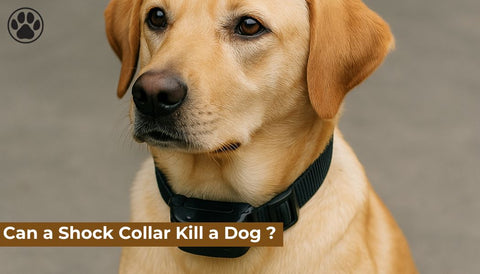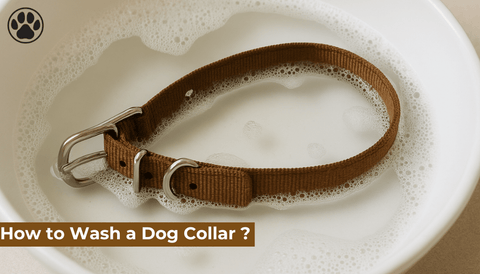
How to Measure for a Dog Muzzle?
of reading - words
Choosing the right muzzle for your dog is an essential step in ensuring their comfort and safety. Whether you need a muzzle for training, grooming, or managing reactive behavior, it’s crucial to measure your dog correctly to select the best fit. This guide will walk you through the process step-by-step, with tips to make the experience easy and stress-free.
Why Accurate Measurements Matter
A well-fitted muzzle provides comfort for your dog while effectively serving its purpose. Ill-fitting muzzles can cause discomfort, chafing, and even injuries. Moreover, a poorly sized muzzle may not stay securely in place, defeating its purpose altogether. Proper measurements ensure a balance of safety, functionality, and comfort.
Tools You Will Need
Before you begin, gather the following tools:
-
A soft measuring tape or a piece of string and a ruler
-
Treats to keep your dog calm and cooperative
-
A notepad to jot down measurements
Step-by-Step Guide to Measuring Your Dog for a Muzzle
Step 1: Measure the Length of the Snout
Start by measuring from the tip of your dog’s nose to the point where their snout meets the skull. This measurement is critical for ensuring that the muzzle covers the snout without obstructing breathing or causing discomfort.
Step 2: Measure the Circumference of the Snout
Wrap the measuring tape around the widest part of your dog’s snout, typically just below the eyes. Ensure the tape is snug but not tight, as you want to account for a small amount of movement and comfort.
Step 3: Determine the Width of the Snout
Use the tape to measure across the top of your dog’s snout, from one side to the other. This will help ensure that the muzzle’s structure aligns well with the natural shape of your dog’s face.
Step 4: Measure the Height of the Snout
Measure the height of the snout from the base of the jaw to the top of the snout while your dog’s mouth is slightly open. This step is particularly important for basket muzzles, which allow more freedom of movement.
Step 5: Assess Head Circumference (if necessary)
Some muzzles, especially those designed for brachycephalic breeds, require a measurement around the head. Measure just behind the ears and under the chin to determine the correct size.
Tips for Successful Measuring
-
Stay calm and positive: Dogs can sense stress, so maintain a relaxed demeanor and reward your dog with treats for cooperation.
-
Take multiple measurements: For accuracy, measure each dimension at least twice and average the results.
-
Choose the right time: Measure your dog when they are calm and not overly excited or tired.
Choosing the Right Muzzle
Once you have accurate measurements, consider the following factors when selecting a muzzle:
Material
Muzzles come in various materials, including leather, nylon, plastic, and metal. Choose a material that suits your dog’s needs and activity level.
Style
There are different styles of muzzles, such as basket muzzles, sleeve muzzles, and short-snout muzzles. Each style serves a specific purpose, so ensure you select the appropriate one.
Adjustability
Look for muzzles with adjustable straps to ensure a secure and comfortable fit. Some muzzles also include padded straps for added comfort.
Common Mistakes to Avoid
-
Measuring too tightly: Always allow a small margin for comfort and natural movement.
-
Ignoring breed-specific needs: Some breeds require specialized muzzles to accommodate unique facial structures.
-
Choosing based on appearance: Focus on functionality and fit rather than aesthetics.
FAQs About Measuring for Dog Muzzles
Q: How do I know if the muzzle fits properly?
A: A well-fitted muzzle should be snug but not restrictive. Your dog should be able to pant, drink water, and breathe comfortably.
Q: Can I use the same measurements for all types of muzzles?
A: Not always. Different muzzle styles and brands may have varying sizing guidelines, so always refer to the manufacturer’s instructions.
Q: What if my dog falls between two sizes?
A: Opt for the larger size and adjust it for a better fit, or consider consulting the manufacturer for advice.
Q: Are there specific muzzles for flat-faced breeds?
A: Yes, there are muzzles designed for brachycephalic breeds like Pugs and Bulldogs. These accommodate their unique facial structure.
Q: How often should I re-measure my dog?
A: It’s a good idea to re-measure if your dog’s weight or age changes significantly, as this can affect their muzzle size.
Conclusion
Measuring your dog correctly for a muzzle is a vital step in ensuring their safety, comfort, and well-being. By following the steps outlined in this guide, you can confidently select the perfect muzzle for your furry friend. Remember, a well-chosen muzzle not only fulfills its purpose but also strengthens the bond of trust between you and your dog.




